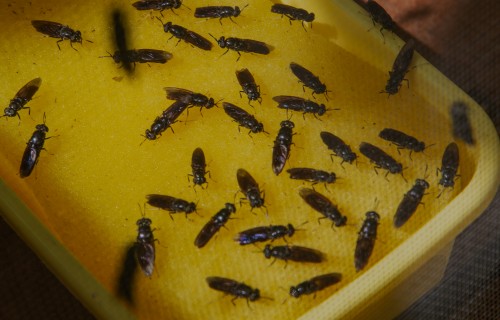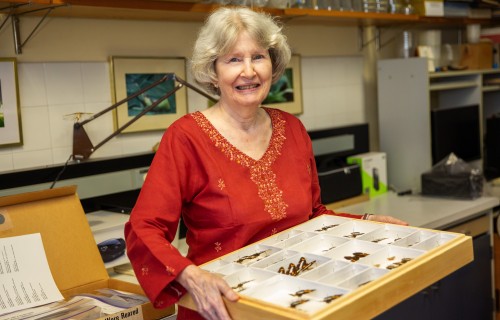Smithsonian science helps understand blue whale migratory and foraging patterns to inform conservation strategies
Carbon
Stranglers
Lianas can suppress tree growth in young tropical forests for decades
Agua Salud, Panama
Tropical reforestation projects need take into consideration “liana infestation” to maximize carbon sequestration, says the study’s lead author.
Lianas, or woody vines, have been proliferating relative to trees in some tropical forests. A new study at the Smithsonian Tropical Research Institute in Panama shows that lianas can slow the accumulation of biomass in young forests as well as in more mature ones. The effect became more severe as forests became older: lianas reduced tree growth by almost a fifth in five-year-old forests but inhibited it by nearly a third in 30-year-old forests.
“There is quite a bit of interest in the potential for naturally regenerating forests to store carbon and help moderate increases in CO2 in the atmosphere,” said co-author and STRI staff scientist Jefferson Hall. “Thus, it is critical that we understand the role lianas might play in counteracting this ecosystem service.”
Tropical forests store almost 30 percent of terrestrial carbon worldwide, a critical buffer against climate change. Lianas are an important component of these forests, but have been shown to reduce tree growth through competition for light and nutrients. Data from STRI’s ForestGEO global network of forest plots show that lianas are increasing in some tropical forests, notably those in the Americas, potentially impairing the ability of these forests to store carbon.
More than half of the world’s tropical forests are secondary forests that are regenerating on land previously cleared for agriculture or logging. These fast-growing forests have been demonstrated to have great potential to accumulate and store carbon. Although lianas can be abundant in secondary forests, there is little documentation of how they affect the growth and carbon storage.
The study was conducted in STRI’s Agua Salud project in central Panama, one of the largest landscape-scale studies of secondary forest dynamics in the tropics. Research at Agua Salud is focused especially on developing systems of Smart Reforestation® that will maximize ecosystem services from tropical watersheds in response to global climate change.
Data on growth, mortality, and recruitment on woody plants, including trees, shrubs, and lianas, were analyzed from 84 plots at 42 sites in former pastures where forest had been regenerating for from three to 32 years. Lianas were found to reduce the growth of tree biomass by 19 percent after five years, and by 32 percent after thirty years. Extrapolating from the field data, the projected reduction in growth after 60 years would be 47 percent. But increased growth by lianas did not compensate for the loss of tree growth: lianas made up for only 56 percent of reduction in tree growth in five-year-old forests, decreasing to just 28 percent in 30-year-old forests. Because lianas rely on trees for support they can put less wood into their stems, and thus contribute relatively less to the biomass of the forest.
The tropical forests of central Panama, including the original ForestGEO plot on Barro Colorado Island, Agua Salud, and other sites, are the most intensively studied in the world. Data from fine-scale and long term monitoring of plots, satellite imagery, canopy studies, and LiDAR and drone surveys, coupled with mathematical models, have given us an increasingly powerful understanding of tropical forest dynamics. Ongoing studies of lianas are providing another component for predicting how the ability of tropical forests to accumulate and store carbon may be affected by future global climate change.
“In future studies, by knowing the impacts of lianas on forest growth we could further examine why some individual trees or forest stands are more resistant to the growth reduction imposed by lianas,” said lead author Hao Ran Lai, a doctoral student at the University of Singapore. “This could help with prioritization in forest management and also design restoration plans that lead to better resistance against liana infestation.”
Lai, Hao Ran, Hall, Jefferson S., Turner, Benjamin L. and van Breugel, Michiel. 2017. Liana effects on biomass dynamics strengthen during secondary forest succession. Ecology, doi:10.1002/ecy.1734














